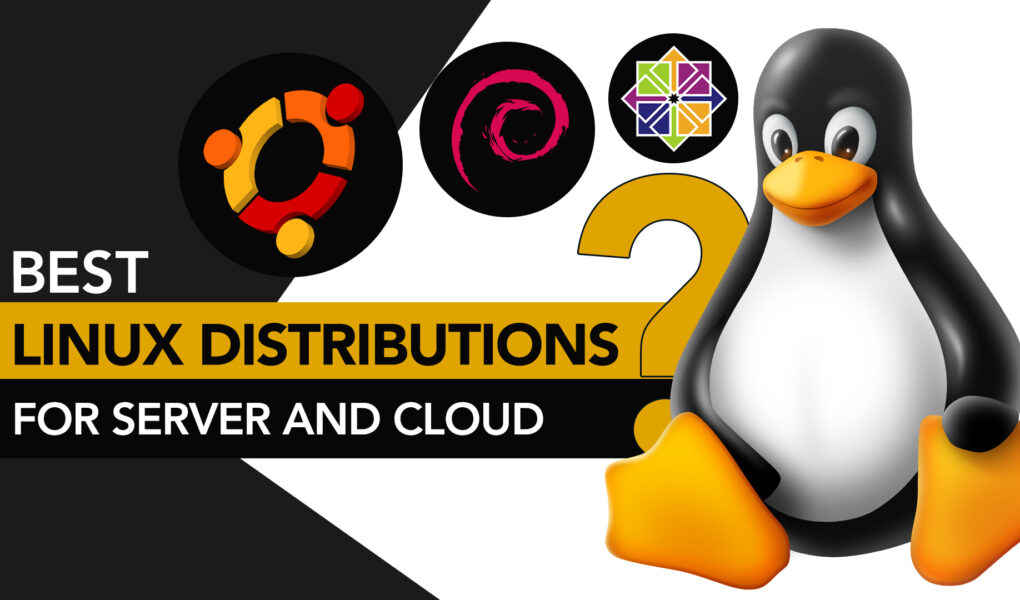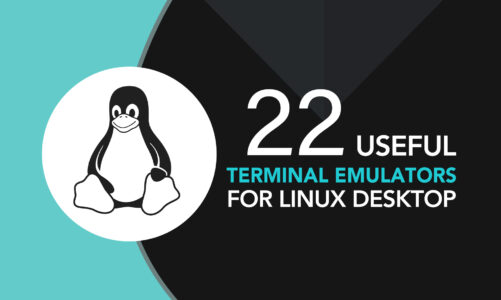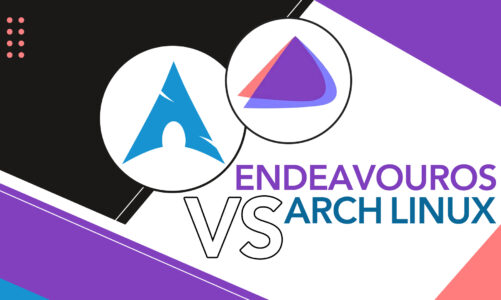With the growing transition of businesses to digital frameworks, the demand for effective, safe, and adaptable operating systems has become increasingly critical.
As you navigate this intricate world, you will encounter several distributions with awe-inspiring features, each vying for the title of “Best Linux Distribution.” Your quest is not only significant but also incredibly relevant, as the server and cloud solutions you select today will shape the future of your digital empire.
The right distribution is the key to unlocking untold performance, stability, and security. Let’s get started and discover the best Linux distributions for your server and cloud needs!
Best Linux distributions for server and cloud
1: Ubuntu Server
Ubuntu Server, a robust Linux distribution by Canonical Ltd., is highly regarded for server and cloud deployments due to its stability, security, and ease of use. Long-Term Support (LTS) releases to ensure a consistent platform, while regular security updates protect against vulnerabilities. Its user-friendly design, well-organized documentation, and active online community make it accessible to both new and experienced Linux users.
Scalability is another major advantage of Ubuntu Server, as it efficiently adapts to various infrastructures and supports multiple hardware and virtualization technologies, including popular cloud platforms. The extensive software repository, maintained by the community and Canonical, simplifies application deployment.
Moreover, the predictable release cycle enables organizations to plan upgrades confidently, knowing they’ll receive the latest features and improvements. Overall, Ubuntu Server’s combination of features makes it a top choice for server and cloud environments worldwide.
2: Red Hat Enterprise Linux
Red Hat Enterprise Linux (RHEL) is a leading Linux distribution renowned for its robustness, security, and reliability in server and cloud environments. With a stable codebase and long-term support releases, RHEL ensures minimal downtime and maintenance costs for mission-critical applications. Its security features, such as Security-Enhanced Linux (SELinux) and System-wide Cryptographic Policies, provide a secure foundation for businesses, while its scalability makes it suitable for organizations of all sizes.
The extensive ecosystem of certified hardware, software, and cloud providers ensures compatibility with existing infrastructures, and Red Hat’s comprehensive support services help resolve issues efficiently. As a major contributor to open-source projects, Red Hat drives innovation and maintains transparency, allowing RHEL to benefit from cutting-edge features and improvements.
3: SUSE Enterprise Server
SUSE Enterprise Server (SLES) is a leading open-source, enterprise-level operating system designed for server and cloud environments. Its popularity stems from its exceptional stability, security, and performance, which are essential for high-performance computing, big data analytics, and machine learning applications. SLES offers compatibility with a wide range of hardware architectures and seamless integration with other enterprise solutions, making it an ideal choice for diverse environments, from on-premise data centers to public and private clouds.
One of SLES’s key strengths is its commitment to the open-source community. This ensures that organizations benefit from ongoing feature development and improvements.
Furthermore, SUSE provides comprehensive support and maintenance services, giving businesses access to expert guidance and prompt assistance when needed.
These factors make SUSE Enterprise Server a top choice for organizations seeking reliable and efficient Linux distribution for server and cloud environments.
4: Fedora Server
Fedora Server stands out as a top Linux distribution for server and cloud environments due to its cutting-edge technology, stability, and modular design. As part of the Fedora Project, it serves as a testing ground for new advancements before being incorporated into Red Hat Enterprise Linux (RHEL), ensuring users have access to the most up-to-date features.
In addition, Fedora Server is equipped with robust security features, such as SELinux and system-wide cryptographic policies, which help protect against potential threats and minimize vulnerabilities.
5: Oracle Linux
Oracle Linux is a high-performance, cost-effective Linux distribution tailored for enterprise-level server and cloud environments, offering seamless compatibility with Red Hat Enterprise Linux (RHEL) and CentOS. Its standout features include built-in support for Oracle Cloud Infrastructure (OCI) and other popular cloud platforms.
6: Debian
Debian, a popular open-source Linux distribution, is widely considered a top choice for server and cloud deployments due to its stability, reliability, and customizability. Its extensive package repository, dedicated security team, and strong community support make it an attractive option for various use cases and workloads. With a focus on long-term support and a modular design, Debian provides a robust, flexible, and secure platform that is ideal for critical applications in server and cloud environments.
7: Alpine Linux
Alpine Linux is considered one of the best Linux distributions for server and cloud environments due to its minimal footprint, security focus, Docker support, simplicity, and scalability.
The distribution’s compatibility with Docker makes it a preferred base image for containers, and its simple yet efficient package manager, apk, is well-suited for managing packages in server and cloud environments. Overall, Alpine Linux’s features make it an optimal choice for both small-scale and large-scale deployments.
Conclusion
It’s clear that Linux distributions offer an impressive range of options for server and cloud environments. From the lightweight, container-focused Alpine Linux to the enterprise-class, Red Hat-supported CentOS, there is a suitable distribution for every need and use case. The key is to carefully consider your requirements and experiment with the different distributions to find the one that best suits your specific use case.



